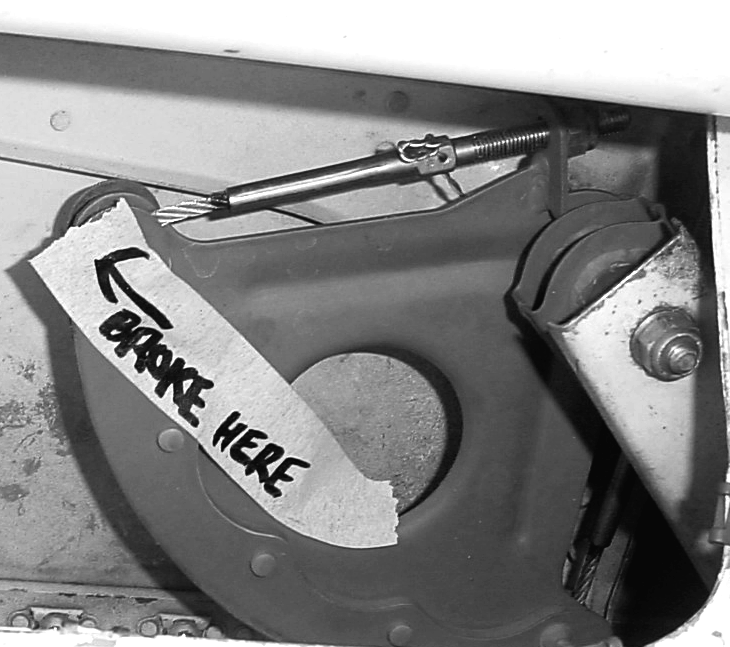AL 2003-05
16 May 2003
Flap Cable Failure P/N 1460100-7 and 1460100-8
Transport Canada has recently learned through the Service Difficulty Reporting System of a flap cable breakage during landing on a Cessna 336. Additional investigation has revealed several other reports indicating excessive wear in the same area as the breakage; the inboard flap bellcrank.
Cessna's inspection schedule requirements are at each 100-hour interval but do not specifically mention removal of the cables for inspection. CAR 625 Appendix B is also available for private operators. It provides general inspection guidelines, however, removal of the cables for inspection is not stipulated.
The Cessna's Pilots Association has produced an article that gives an excellent description of the installation and problem area. The following is an excerpt from that article:
"The cables in question are part numbers 1460100-7 and 1460100-8 that are connected to the inboard flap bellcrank in both wings. The bellcrank is located between the fuselage and boom, one on each side. The cable is bent around the bellcrank in a tight radius bend and attaches to the bellcrank by a threaded end terminal swaged onto the cable and an external lock nut. The cables are 1/8 diameter and are 7X19 construction. This means there are 7 bundles with 19 strands in each bundle.
The area of the concern is approximately 1 inch from the swaged terminal. It appears there is motion between the cable and bellcrank during the flap operation at the bend radius. This motion sets up a wear pattern on the inside radius of the cable. The bellcranks will have a highly polished area on the inside groove that matches the tight radius bend in the cable. The inside bundles will flat spot and this condition cannot be seen during a normal cable inspection that should occur during an annual or 100-hour inspection because the outer bundles are the only ones exposed. When enough wear occurs, the inside bundle strands fracture and break.
When strands break, more stress is placed on the remaining bundles and eventually the cable fails. The only way to see the wear condition is to remove the cable from the bellcrank and inspect the inside radius for wear. In FAA AC43.13-1B, chapter 7, section 8, paragraph 7-149, figure 7-17 shows the worn cable configuration. If the cable is moved to try to straighten out the bend, strands will begin to fracture on a worn cable. The cable does not have to be completely straightened out for this to occur.
Several parameters can add or delay the wear condition. Cable lubrication can delay the wearing condition and cable lubrication is detailed in FAA AC43.13-1B".
Transport Canada highly recommends that all owners and operators of Cessna 336/337 aircraft remove the flap cables and inspect for this condition before or at the next 100-hour inspection.
Further defects or occurrences of this nature should be reported Transport Canada, Continuing Airworthiness Ottawa via the Service Difficulty Reporting program.
For further information, contact a Transport Canada Center, or Steve Dudka, Continuing Airworthiness Ottawa, telephone (613) 952-4361, facsimile (613) 996-9178 or e-mail dudkas@tc.gc.ca.
For Director, National Aircraft Certification
Robin Lau
Acting Chief, Continuing Airworthiness
